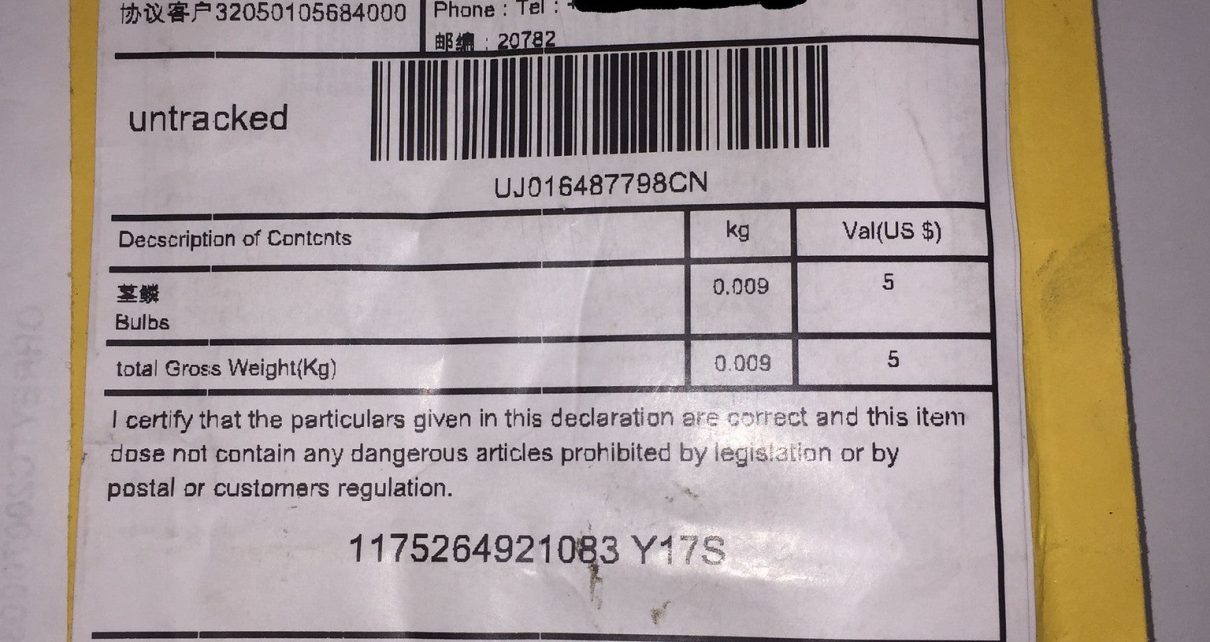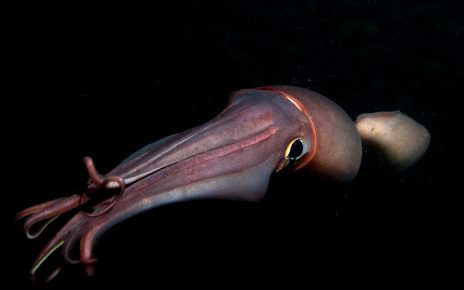Americans from Maine to Texas have recently reported receiving mysterious packages sent from China. Often labeled as jewelry, the parcels instead contain clear plastic bags with unknown seeds of various shapes, sizes and colors. The U.S. Department of Agriculture and state agriculture agencies are urging people not to plant—or even throw away—these organisms. Instead they want recipients to send the seeds to them for investigation.
Last week an official at the Plant Protection and Quarantine program at the USDA’s Animal and Plant Health Inspection Service (APHIS) said that so far the agency has “identified 14 different species of seeds, including mustard, cabbage, morning glory and some of the herbs—like mint, sage, rosemary, lavender—and other seeds, like hibiscus and roses.” And in a press release APHIS said it does not “have any evidence indicating this is something other than a ‘brushing scam’ where people receive unsolicited items from a seller who then posts false customer reviews to boost sales.” (For someone to be able to leave a review, an actual shipment has to be registered in a retail system such as Etsy.)
But Laura Meyerson, an invasion biologist at the University of Rhode Island, says there is still cause for concern. She has been studying invasive plants since she was a graduate student at Yale University, where she was prompted by a professor explaining how phragmites—common reeds—are invading muskrat habitats and destroying the animals’ homes on the Quinnipiac River. At the same time, she became interested in science policy, which eventually led her to serve on the Department of the Interior’s Invasive Species Advisory Committee from 2016 until the committee’s deactivation in 2019. Scientific American spoke with Meyerson about why this seed mystery is concerning, the potential dangers of invasive plants and the controls in place to stop them.
[An edited transcript of the interview follows.]
What are some of the methods the USDA might use to identify the seeds?
They may have done a morphological identification, based on shape and size, et cetera. And then they may be also running some genetic analyses.
What you would be looking for is a seed of a particular size, a particular weight and particular features—color and shape. It might have different physical features on it that make it typical for a particular species. It might have little spurs on it that help it hang on to animal fur, so it gets transported around. So you’d be looking for all those sorts of physical characteristics that were typical for a species.
[The genetic analysis is done] kind of like any genetic study. You go in, and you extract the DNA, and you sequence a sample. And then, based on genetic records, you run the sequences that you get against GenBank [a publicly available DNA sequence database] and get a positive identification—or against sequences in your own database.
The other method, of course, is to grow the seed out—which is exactly what [the USDA is] telling the public not to do. But the USDA may be doing that for a number of reasons—just to see if there’s anything unusual about them. It might want to collect the DNA from the green plant tissue, which can be easier to sequence sometimes.
The USDA has so far identified the seeds by their common names. What is the concern with not being more specific?
Because different species will behave very differently. You could have two species in the same family—even in the same genus—and one could be invasive and one might not be. That sort of taxonomic specificity is very, very important. For example, in the mustard family, the garlic mustard (Alliaria petiolata) is very invasive.
What would happen if people planted any of these seeds?
We don’t know, because we don’t know what they are. That means we don’t know if they’ll be harmful or not. Could these be genetically modified seeds? Possibly. Perhaps that’s something we don’t want to release into the environment. Because once you release that, it can spread to other plants if they’re outcrossing [breeding between two plants that are unrelated], and there could be sharing of genetic material, which might be undesirable. If you want to get really paranoid, you could think about some kind of genetically modified seeds that had a gene drive [a genetic engineering technique that guarantees a specific gene will be passed on to offspring] in them to have a particular end.
Also, when we bring species from one place to another, generally, they don’t come alone. It’s possible when that plant was imported, it brought with it viruses or other pathogens that could be harmful. It’s really a biosecurity issue, whether or not harm is intended. Even if it’s just one of those brushing schemes, as has been suggested, that doesn’t mean that there’s not potential harm.
Why is the USDA telling people not to throw the seeds away?
Your garbage can theoretically get transported to a dump somewhere. That could end up with those seeds germinating and becoming naturalized—and then becoming invasive. It’s possible somebody could go through your garbage can and find them, take them and plant them. It’s an opportunity for those seeds to be released, and that’s why they’re saying, “Don’t do that.”
The second thing is the USDA really wants those packets—because they give it an opportunity to have a greater sampling of what’s out there. And they are also evidence. They needs the public to cooperate in that way to help figure out what the heck is going on and to make sure that there’s no harm.
What is the difference between becoming naturalized and becoming invasive?
So, you’ve got a native species—evolutionarily native to a place. And then you’ve got species that are nonnative. Naturalized species are nonnative species that are introduced and able to self-sustain and even spread. And then invasive species are naturalized species that have high rates of spread and cause harm. The federal definition in the U.S. for invasive species is nonnative plants, animals and pathogens that cause harm to the economy, the environment and human health.
Tulips were introduced to the U.S. from Holland. They were nonnative species. But tulips aren’t running around and taking over North America. So they’re not invasive; they’re just nonnative.
Is there any way to eradicate an invasive species once it becomes established?
Often the answer is no, unfortunately. Many, many, many species are introduced into the U.S. We’ve had tens of thousands of plants introduced into this country. Now, not all of them are invasive. But enough of them are that we’re spending $20 billion or $30 billion every year to manage them.
There are some success stories: we employ biocontrol agents to help minimize invasive species. But really getting rid of something once it’s been introduced is hard unless you’re really on the ball and get to it or are darn lucky.
How does the biocontrol process on our borders work?
There are inspection agents at the airports and seaports. They do the best they can, but the volume of goods coming into this country is just absolutely overwhelming. We don’t have enough inspection agents at the borders to catch all of these things. That said, there is a huge movement toward developing technologies to assist in the detection of invasive species.
Is there any notable invasive plant species that arrived in the U.S. recently?
Giant hogweed. That plant is so nasty. It’s really invasive. It’s this plant that produces a chemical that burns your skin and can even blind you.




